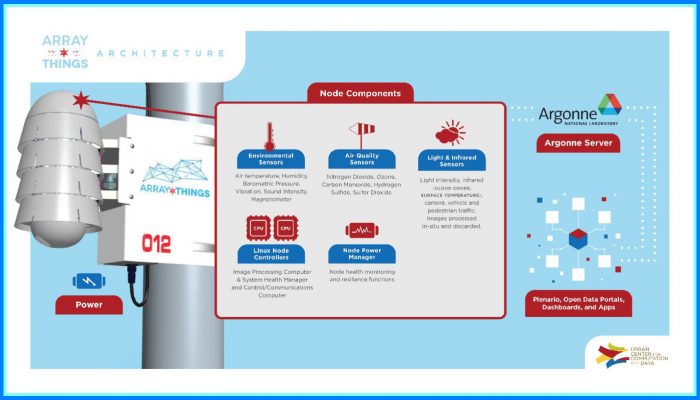Called the Array of Things, this linked network of sensors — ultimately 500 — serves as a “fitness tracker” for the city. The initial installation, in a diverse neighborhood called Pilsen, will focus on air quality data with the hope of better understanding its relationship to childhood asthma, among other things. When fully operational, this stream of hyper-local, real-time data will enable researchers and officials better understand and address critical challenges.

Sensors and More ...The IoT
“It’s truly doing science in the city and out in the communities. We’ll be able to engage with community groups to help them make the data their own and figure out to use it to address the questions they have.” — Brenna Berman, Chief Information Officer of the city of Chicago.
Funding
- National Science Foundation
- Argonne National Laboratory
- Chicago Innovation Exchange
- City Digital
Implementation
- Community input and scientists together decided where to place sensors
- Created new streams of data that help address critical urban challenges
- Eight sensors designed to track air quality and relationship to asthma and other diseases
Partners
- Argonne National Laboratories
- Product Development Technologies
- City of Chicago
- University of Chicago
- AT&T
- With technology assistance provided by:
- Cisco
- Intel
- Microsoft
- Motorola Solutions
- Schneider Electric
- Zebra Technologies
Lessons Learned
- Multi-function sensor technology can be integrated into city-wide data collection.
- “Wired” cities can help deliver services and resolve concerns citywide, and also at the micro-level, down to individual neighborhood streets.
- Public officials and researchers can track impact of decisions with real-time data.
- As costs come down, the technology will become available to smaller communities.

